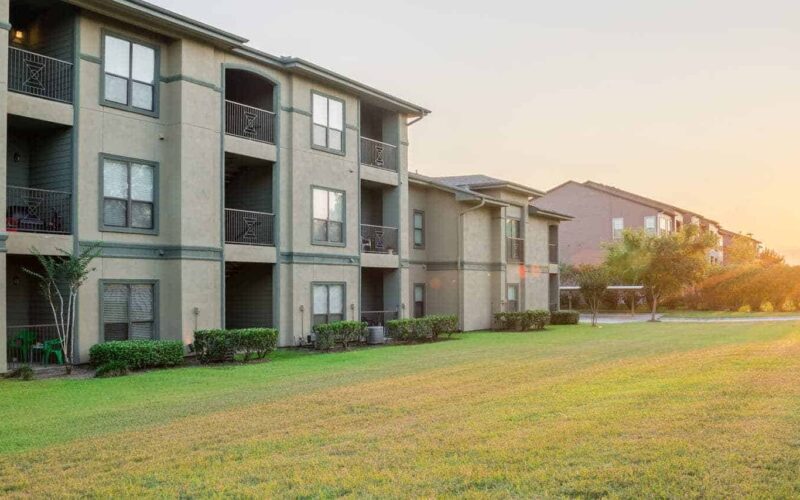You’ll mostly come across two acronyms when looking to buy a home in a city or urban area: PUD and HOA. Although they appear to be the same, they serve different objectives, which is what we’re here to help you understand. You’ll discover all you need to know about PUD (Planned Urban Developments) real estate terms and whether buying a house in one is the right choice for you in the sections below. Let’s start with how to define PUD real estate.
Define PUD in Real Estate.
One can define PUD (planned urban development) in real estate, as indicating that the home you are purchasing is part of a planned community and that you will become a member of the HOA and a part-owner of common areas and facilities once you purchase the property. Condos, townhomes, and single family homes are examples of housing types that can be found in PUDs. Commercial PUD real estate term uses are also possible, but that is a topic for another discussion.
PUD real estate properties often have access to local amenities such as lakes, parks, and swimming pools, among other things. It’s possible that the property is part of a larger community with its own grocery stores, gyms, restaurants, and security detail.
It’s crucial to realize that the scope of the rights that come with a PUD real estate term varies—not all are created equal—and this could also apply to a specific community and local area amenities.
Define PUD in Real Estate Overview
Planned urban development is usually the result of a collaboration between a local authority and developers. In recent years, urban planners have become increasingly interested in recreating pre-modern human societies’ mixed-use orientation. Housing, commerce, and localized industry were all combined in these historic communities.
A community’s nexus was frequently an important natural resource, such as a water source or defensible high ground. A trend toward single-purpose zoning in metropolitan areas occurred as a result of industrialization and modernization, notably in the second half of the twentieth century. As a result of this trend, planned urban development arose, focusing urban communities on the principles of convenience and efficiency rather than a natural resource or feature.
Homebuyers and renters willing to pay a premium can be attracted by high-end retail and event programming. Theatrical performances and other forms of nightlife can have a similar effect. Finally, planned development allows developers to give urban planners and commercial and residential end-users exactly what they want: efficient and varied use of limited urban space.
What Is an HOA?
Many residents are skeptical about HOAs since they are a sort of organization that can be difficult to comprehend for new homeowners or those who are not native Americans.
HOAs are common throughout the United States, and many of them have specific restrictions that are strictly enforced in both residential and condominium communities.
HOAs are often founded when a community or condominium is built, and any future owner who decides to invest in that property inherits the HOA’s obligations. When potential investors are looking for the perfect home to buy, it’s a good idea to read the HOA’s entire rules to make sure there aren’t any hidden rules that could cause problems later.
PUD vs. HOA, What is the Difference?
The distinction between a PUD and an HOA is that the former is a property description, whilst the latter is a sanctioning organization to which you as a homeowner pay dues.
The HOA is effectively in charge of maintaining the community to which the PUD is connected. That means PUD owners must pay HOA dues in order to maintain the services to which homeowners are entitled.
Being a member of an HOA also implies that the homeowners adhere to the HOA’s practices and regulations. What this implies for you as a buyer is that you’ll want to read up on both the PUD’s rights and the HOA’s requirements, as both can differ based on the community to which the property is tied.
Define PUD Real Estate on an Appraisal.
On an appraisal, a PUD indicates if the property is part of planned urban development and, if so, how much you will most likely owe in fees. Pay great attention to this part since you’ll learn which costs are voluntary vs. mandatory.
PUD real estate term may be checked on your evaluation documentation in some circumstances, but there is no clear example. If you can’t figure out why the property is classified as a PUD, you should contact the appraiser. They can fill you in on any specifics that aren’t in the fine print, as well as any other pertinent property information.
Pros and Cons of Living in a PUD Real Estate
There are benefits and cons to living in a PUD. Take a peek around.
Pros
We will consider some notable advantages of the PUD real estate term.
#1. Private amenities
Compared to a normal HOA, PUDs can provide more private amenities and common ground, such as grocery stores, restaurants, privately controlled roadways, and more. Parks, swimming pools, and fitness facilities are examples of additional amenities.
#2. Land ownership
The homeowners association owns the structure and land in a PUD, not the homeowners. Within specific limits, PUDs provide additional flexibility in use.
#3. Convenience
Residents of a PUD can access any of the PUD’s amenities by walking, biking, or driving a short distance. Walking trails, vast sidewalks, cycling routes, and wide roadways are all available in many PUDs, making it easy to go around.
#4. Affordable amenities
When compared to other communities, PUDs may offer lower-cost facilities. Residents may also be able to save money on street construction, utility bills, and upkeep.
Cons
Just like any other thing PUD real estate term has its own level of disadvantages and we shall look at them in this section.
#1. HOA fees
All residents of a PUD are required to join the HOA and pay dues.
#2. Restrictive covenants
PUDs may have varying degrees of restrictive covenants, which some homeowners may perceive as restricting their freedom. These covenants can include rules about home aesthetics, landscaping, home additions, quiet hours, pets, and public area usage.
#3. Proximity to other houses
In some HOAs or areas, homes may be significantly closer together than in others. Those who don’t want to be too close to their neighbors should think twice.
#4. Buying and selling challenges
PUD real estate presents its own set of issues. Purchasing and selling a PUD may be more complex. A PUD with numerous available units can lower the price and make it more difficult to sell your home.
What Does It Mean as a Buyer or Seller if Your Home Is in a PUD?
If you want to buy a home in a PUD, there are a few things to consider that are different from buying a regular single-family home.
For one thing, obtaining finance for a PUD home is a little more difficult. Your lender will have to take a few extra measures with a PUD loan to guarantee your PUD is a sound investment. Your lender will look at whether there are any delinquencies on HOA dues from residents. Whether the PUD has enough reserves put up, and whether there is adequate insurance coverage. Moreso, your lender will also confirm that the majority of the properties in your PUD are residential rather than commercial.
If your lender discovers any problems with the PUD, their HOA, or their finances, you may have trouble obtaining a loan for the whole amount. Financial troubles within the PUD may suggest that house prices in the neighborhood will fall in the future, posing a greater risk to your lender.
Before purchasing a home in a PUD, you should read the fine print and details of the HOA agreement. As well as the potential cost of your monthly HOA fees. Because PUDs typically provide a plethora of amenities, your HOA fees will most likely reflect this. Your monthly dues may be fairly high, and you should factor these expenditures into your entire budget.
In a PUD, as in other places with a homeowners’ association, you’ll observe specific regulations and community norms. Because certain PUD communities may be more stringent than others, you’ll want to know what rules you must observe. The PUD, for example, may restrict the external appearance of a home, including landscaping and décor.
What do PUD Owners Actually Own?
A planned unit development (PUD) is a type of community in which each individual unit owner owns not only their home but also their lot and the common area. Who owns the property on which the construction is located is the defining characteristic that differentiates a PUD townhome from a condo townhome that is managed by an HOA. When there is a condo involved, the association is the one who owns the land.
What is a PUD in Texas Real Estate?
Although a PUD (Public Utility District) may appear to be very similar to an HOA at first glance due to its creation by the community and operation by an elected board, a PUD’s main purpose is to supply utilities such as power, water, sewer, and telecommunications. PUDs are run independently by the homeowners association (HOA), despite the fact that the homeowners control them.
How Does PUD Zoning Differ From Ordinary Zoning?
What are some of the key differences between ordinary zoning and zoning for planned unit developments? Ordinary zoning regulations often have a limited scope and are applicable to a vast geographical region. PUD zoning is adaptable and can be used even in more condensed spaces. PUD zoning makes it easier to combine several forms of real estate into a single development project by providing more flexibility.
What is the Difference Between a PRD and a PUD?
The planned residential development, sometimes known as a “PRD,” is likely the type of PUD that is the most common. Because PRDs are only permitted to be used for residential purposes, they do not have the flexibility to accommodate a variety of functions, as would be the case with a PUD plan. Nevertheless, just like the PUD, the PRD enables significantly more inventiveness and adaptability in terms of design and layout.
What is PUD zoning in Texas?
This division outlines the processes that must be followed and the requirements that must be met for a planned unit development (PUD) zoning district in order to carry out the objectives of this division, which are to preserve the natural environment, encourage high-quality development and innovative design, and guarantee adequate public facilities and services.
Is a Planned Unit Development a Good Investment?
A PUD has numerous advantages. You own the house and the land on which it rests, and you have access to numerous facilities that you would not find in a conventional condo or apartment complex, or in a standard single-family home.
Furthermore, because PUDs are their own community with their own homeowners’ organization, you may expect a specific level and standard of life. PUDs are responsible for the upkeep and maintenance of amenities, roadways, shared green spaces, and landscaping. You may be able to enjoy services such as total lawn care or snow removal in certain PUDs. This allows you to devote your time and efforts elsewhere.
However, if you’re on a tight budget, a PUD might not be the ideal investment. Depending on the type and scope of amenities, HOA fees can be prohibitively expensive. A PUD may not be right for you, especially if you do not intend to use the majority of the amenities. Even though a PUD has everything from tennis courts to a posh community pool. If you don’t play tennis and dislike swimming, a PUD may not be worth the extra costs.
What is a Common Interest Subdivision?
Condominiums, cooperatives, retirement communities, vacation timeshares, and other housing developments comprised of individually owned units in addition to shared facilities and common areas are examples of common-interest communities. Common-interest communities are also referred to as CIDs, which is an abbreviation for common-interest developments.
Why are Condos Better than Coops?
You are the sole owner of the property, which includes any interest in the common spaces. Condos are typically less difficult to obtain financing for than co-ops. The cost of items like building maintenance and repairs is covered by the monthly fees. Condominiums typically have fewer or even no usage restrictions, which makes it considerably simpler to rent out or sell a condo rather than a co-op apartment.
Which Type of Estate is the Most Desirable?
Due to these factors, the absolute fee simple estate is the most attractive type of estate that may be acquired in the context of residential real estate transactions. In addition to that, it is the most typical. estate goes back to the person who was the original grantor of the estate. Determinable and condition subsequent defeasibility is the two varieties of fee simple defeasibility.
What is a PUD FHA?
A residential development that has a mix of different land uses, such as single-family houses, rental, condominium, cooperative, and/or townhouse properties, is referred to as a planned unit development (PUD). This type of development can also be housed within a subdivision. The FHA does not offer for sale any of the properties that are contained inside a PUD.
Conclusion
Think you might enjoy living in a PUD? If you like the idea of living in a small community that offers many types of dwellings and lots of amenities, you might like it. Just remember that an HOA typically runs a PUD and all residents must join and contribute to HOA fees. Make sure you feel comfortable with the requirements and ask questions before you buy.
FAQs
What is the purpose of a planned unit development?
A planned unit development, or PUD, is intended to provide greater freedom in the configuration of buildings and/or uses on a site that is permitted by ordinary zoning rules.
What is PUD in mortgage?
One can define PUD in real estate as a compact community that may include a variety of single-family residences, such as townhomes or condominiums.
What is PUD in real estate banking?
PUD is an abbreviation for Planned Unit Development. You can define PUD in real estate banking as a community of homeowners who pay monthly dues to an association.






